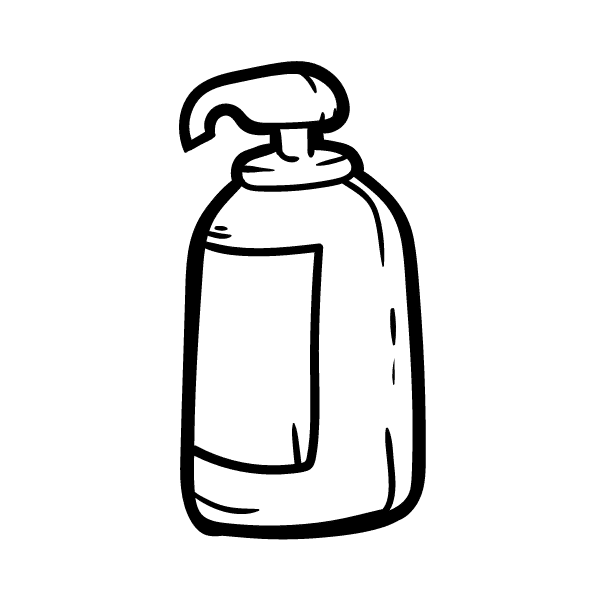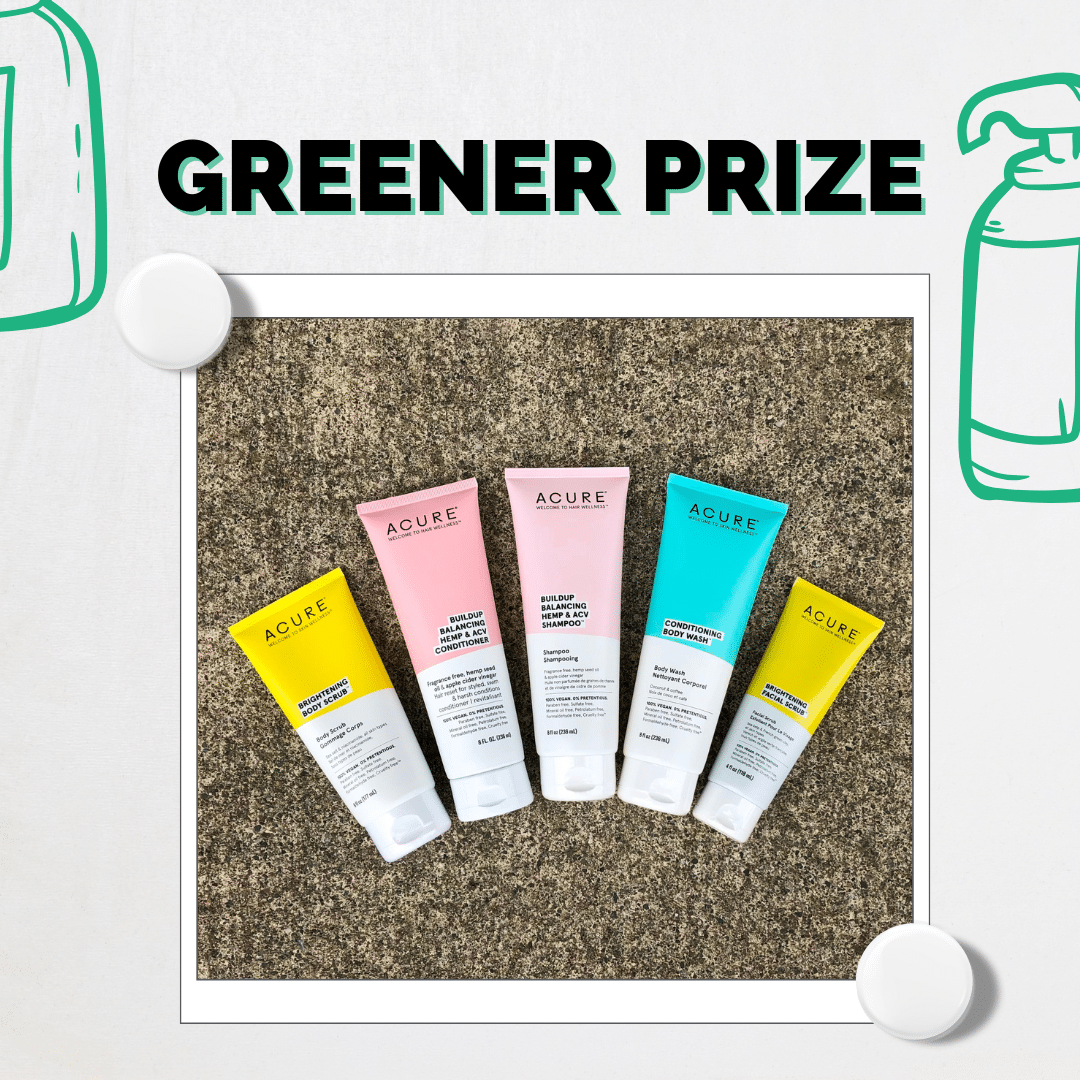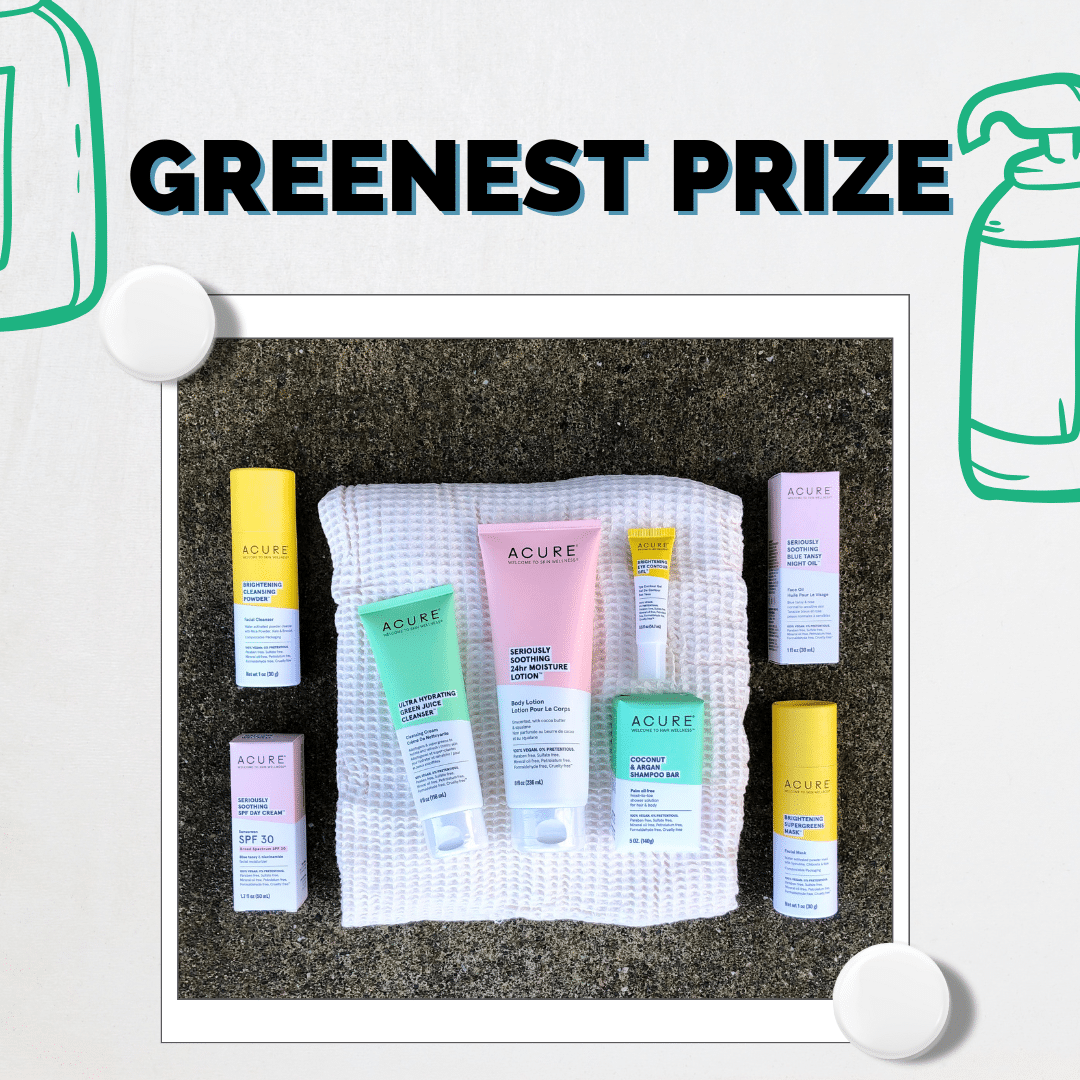
Do you know what’s in the products you use every day?
We talk a lot about what goes in our bodies, but it’s equally important to talk about what goes on our bodies every day. Although we’re unable to control everything we come into contact with, we can make informed choices about what products we use.
Ironically, many products marketed to keep us “healthy” and “clean” actually do more harm than good. Even personal care essentials like shampoo, toothpaste, soap, and deodorant are often full of toxins with links to a plethora of serious health issues, including cancer and fertility problems.
What is your daily routine? Wash your face? Brush your teeth? Take a shower? Sleep? As you go through your day-to-day life, chances are that you come into contact with many potentially harmful substances, but that doesn’t have to be the case. We hope to inspire you to look through a green lens to assess lifestyle choices. To start, let’s check out some items that may be harmful to both you and the planet.

Products in your bathroom or toiletry bag are likely full of long lists of untested, and unsafe synthetic ingredients. For example, a simple word like ‘fragrance’ may contain up to 4,000 compounds that companies can claim as trade secrets, without disclosing the reality of their ingredients. It’s worth noting that some people are at higher risk from these products than others. Women are exposed to far greater amounts of chemical-laden products because they use more items on average, resulting in higher concentrations of certain chemicals in their bodies. This disparity is even greater for women of color. Products designed for Black skin and hair contain unusually high levels of toxic compounds. Professor D. Wendy Greene puts it best: “Natural hair bans leave African descendant women and girls in a precarious Catch-22. Either don your natural hair at the risk of lawfully being deprived of employment or an educational opportunity or don straight hair at the risk of enduring consequential harm to your physiological, psychological, economic and physical wellbeing.” Campaign for Safe Cosmetics has compiled a list of black-owned beauty brands with non-toxic and sustainable products.
“Your body is your own Planet Earth.”
– Caroline Myss, Author of Anatomy of the Spirit
Data compiled by Women’s Voices for the Earth reports that one-third of all fragrance chemicals have been flagged as potentially toxic by scientists. To remedy this practice, Campaign for Safe Cosmetics runs broad campaigns for increasing the safety of daily use products without toxins.
As of January 2022, companies in California must disclose all ingredients. Women’s Voices for the Earth and Breast Cancer Prevention Partners passed a California law known as the Fragrance and Flavors Right to Know Act (SB312), This requires disclosure of toxic fragrances, flavors and ingredients (linked to cancer, reproductive and developmental harm, neurotoxicity, hormone disruption, allergies, and air and water contaminants) used in cosmetics, personal care products, and professional salon products to the state’s Safe Cosmetics Program database. This huge legislative win is already leading to formulation shifts.
Period products are massive contributors to pollution and environmental degradation. With plastic in packaging and products themselves, it is estimated that a person who menstruates will produce approximately 400 pounds of plastic waste from pads and tampons during their lifetime. And, they are also made with an endless list of toxic chemicals that include pesticides, dioxin, and fragrances, none of which are necessary. Add these concerns to the period poverty experienced in the United States and around the globe, and we’ve got a serious issue. However, companies such as Natracare provide organic tampons and pads free from plastic and toxic chemicals. Reusable options like menstrual cups and period panties also help you save money and reduce environmental impact.
If you don’t think of cleaning products as having a major impact on your body, think again. Even though we aren’t putting these products in or on our bodies, the release of dangerous chemicals, including volatile organic compounds (VOCs), and others contribute to chronic respiratory problems, allergic reactions and headaches. According to Women’s Voices for the Earth, chemicals in many cleaning products are linked to fertility problems, increased risk of cancer, and respiratory disorders. Toxins in products also have large environmental costs when washed down the drain into our waterways. How do companies get away with this? In the United States, over 85,000 chemicals have been introduced without any testing for public or environmental safety. Luckily, there are many non-toxic ways to clean your home. Some DIY household cleaning products use ingredients as common and inexpensive as baking soda and vinegar! If you’re interested in finding recipes for all your household needs, check out Soap & Soul: A Practical Guide to Minding Your Home, Your Body, and Your Spirit with Dr. Bronner’s Magic Soaps by Lisa Bronner, her blog and Clean Green by Jen Chillingsworth.
Even with well-documented risks to individuals and the environment, regulation of these industries is severely lacking. In the United States, no governing body conducts pre-market safety testing or reviews ingredients in cosmetics and personal care products, not even the Food and Drug Administration. In stark contrast, Europe has banned over 1,600 harmful chemicals from cosmetic and personal care products, while the United States has banned or restricted only 11.
Another concern when trying to figure out what products to use is greenwashing – when a company markets products as natural, safe, eco, pure, or ethical, but its ingredients tell a different story. Words like these are meaningless without a third-party certification that upholds specific health or environmental standards. Claims on labels do not always match what’s inside, so we have to become informed consumers who stand up to industries that harm people and contribute directly to environmental degradation and climate change. These days, checking the products you already own has become easier. Apps like Think Dirty have taken away the guesswork by scanning the ingredients list for you and highlighting which are good and which have negative or even toxic effects.
Effective and ethical personal care brands can be easily found. Today’s partner, Acure, formulates affordable products that are better for you and the planet. They are 100% vegan, use no animal testing, and are free of harmful chemicals. Many resources dive further into this topic, like MADE SAFE, whose mission is to verify goods with safe ingredients that avoid harm to human health. Turning Green has also compiled a list of our favorite natural and ethical products, including bath, body, and personal care. There are countless accessible and fun ways to take better care of both your body and the planet; you just have to know where to look — and we are here to help!
When you buy personal care products, what are you looking for? Items that leave you looking and feeling your best? How often have you flipped over a package to read an ingredient list on your shampoo or deodorant? Even then, do you know what those words really mean? Let’s take a closer look.
Start by watching The Story of Cosmetics short video to gain a big-picture understanding of the issue. Write a brief reflection (under 200 words) or create a graphical interpretation to address the following:
Post a text or graphical interpretation on Instagram with a brief, informative caption including one thing you learned. Tag @TurningGreenOrg, @StoryOfStuff, @SafeCosmeticsHQ, @MadeSafeHQ and #PGC2023.
Upload your results and responses in a PDF document including a screenshot of your social post. Include your name (or team name), username, and school on your upload.
Submission Guidelines
Even if you read ingredient labels before purchasing products, you may not get the full story. A single ingredient can actually mask hundreds of different chemicals with proven health risks. In the United States, there are no laws requiring that ingredients found in “fragrance” or “parfum,” for example, be listed on the packaging or elsewhere, amounting to a serious lack of transparency for consumers.
Download the Think Dirty App or use EWG’s Skin Deep Database or app. Next, share a list of the products that make up your daily routine. Pick one skin, body, hair or beauty product that you use regularly. Read the ingredients. How many have you heard of? How many can you pronounce? Snap a photo on your phone to scan the barcode or search for the product. If you can’t find that specific product, pick another or use the Campaign for Safe Cosmetics’ Red List to check ingredients from the label.
Find a clean, eco-friendly, conscious alternative to your conventional product at an online retailer. Look for brands like Acure, Dr. Bronner’s, Everyone, and more. You can also check out MADE SAFE’s Certified Products list for ideas.
Create an infographic comparing conventional and conscious products. Include three facts on each side, as well as ingredients, potential hazards, price, availability, function, and more. Share it on Instagram with a caption to inform friends and followers about the negative impacts of conventional products and the benefits of safer options. Tag @TurningGreenOrg, any resources you used (@MadeSafeHQ if certified, @SafeCosmeticsHQ, @EWG and/or @ThinkDirty) and include #PGC2023.
Upload your responses in a PDF document including a screenshot of your social post. Include your name (or team name), username, and school on your upload to be eligible to win.
Submission Guidelines
We all purchase products, but we can also make skincare ourselves! It’s a fun way to save money, ensure total transparency with ingredients, and lessen waste by reducing packaging and upcycling. Not all DIY skincare products are created equal, so use your best judgment about what works for your skin type, and know that no two bodies are alike! Just make sure to avoid these ingredients in facial skin care.
Check our list of DIY body care recipes to replace a conventional one or peruse ideas for DIY cleaning products. Think about the products you use most often. Which would be easy to replicate? What ingredients might you have on hand? Could you add an essential oil for a natural scent you love? Document the process with photos and/or video, and respond to the following:
Now it’s time to share your DIY product with a friend, housemate or family member. Explain why you chose to make this product, let them try it (or watch you use it), and share 3 facts that you learned from this body challenge. Capture their responses to the following:
Upload your responses in a PDF document including a screenshot of your social post. Include your name (or team name), username, and school on your upload to be eligible to win.
Submission Guidelines
Up to 10 Greener and 10 Greenest outstanding submissions will be selected as winners.

Each Greener Winner will receive:

Each Greenest Winner will receive: